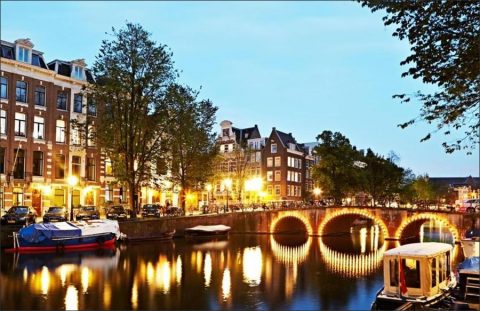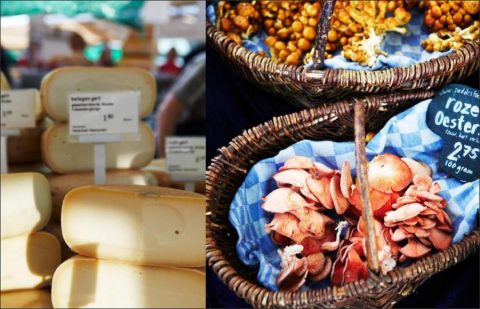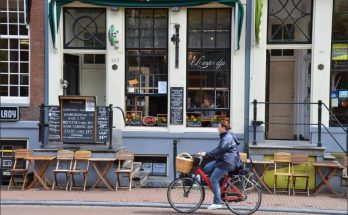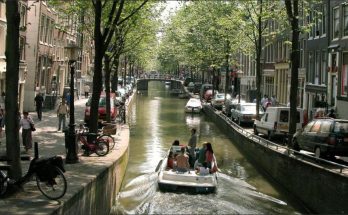This city is a place of contradictions, with tranquil canals and grand 17th-century houses paired with extremely progressive mentalities and the Red Light District.
Amsterdam is a place of contradictions. On the one hand, its tranquil canals and grand houses have changed little since the Dutch Golden Age of the 17th century. On the other, it’s known as a progressive city, famed for tolerance and all the vices that go with it.
See
With the largest collection of Van Gogh works in the world, the Van Gogh Museum consists of more than 200 paintings and 500 drawings by the artist. There’s also a clam-shaped annexe that hosts exhibitions (Paulus Potterstraat 7; admission £12).
Despite often being overwhelmingly busy, the Anne Frank Museum counts among Amsterdam’s most moving experiences – the focus of the museum is the secret area where Anne hid from the Nazis (Prinsengracht 267; admission £8).
Once a working-class stronghold, Jordaan is one of Amsterdam’s liveliest regions, with old townhouses and boutiques arranged around a grid of narrow lanes. The 17th-century Calvinist Noorderkerk hosts acclaimed concerts on Saturday afternoons (Sep-Jun).
The Rembrandt House Museum occupies the building where Rembrandt van Rijn once lived and ran the Netherlands’ largest painting studio in the 17th century – until the artist went bankrupt (Jodenbreestraat 4; admission £8).
Set in Amsterdam’s Latin Quarter, De Pijp, the Albert Cuyp Street Market is the city’s largest market. As well as trading in everything from flowers to an array of cheeses, vendors tempt passersby with waffles and herring sandwiches (admission free).
Eat and drink
A traditional tasting house, Proeflokaal Wynand fockink has been serving jenever (Dutch gin) since the 17th century. Try the house speciality boswandeling – a vivacious combination of jenever, herb bitters and orange liqueur (Pijlsteeg 31; tours and admission free).
Vleminckx is a hole-in-the-wall takeaway that has served portions of frites to the denizens of Amsterdam since 1887. The classic option comes smothered in mayonnaise (00 31 20 624 6075; Voetboogstraat 31; frites from £2).
Buffet Van Odette is not a buffet at all, but a sit-down café trading in simple dishes such as pasta, omelettes and steak sandwiches, compiled using organic ingredients and injected with a dash of culinary creativity. The café has recently moved to new premises on the Prisengracht canal (Prinsengracht 598; lunch dishes from £7).
One of Jordaan’s best eateries, Balthazar’s Kitchen is housed in a former blacksmith’s workshop. The byword for the single set menu is ‘whatever we have at hand’ (Elandsgracht 108; set menus £25).
A long, often graffiti-covered hallway in the Red Light District leads to Blauw aan de Wal, a restaurant housed in an old 17th-century herb warehouse. Many of the dishes carry a French accent, with some Spanish and Italian flourishes (Oudezijds Achterburgwal 99; set menus £45).
Sleep
Located in the De Pijp district, Bicycle Hotel Amsterdam is a casual, green-leaning hotel with basic but comfortable rooms. The hotel also rents bikes and serves organic breakfasts (van Ostadestraat 123; en suite rooms from £50).
A convivial townhouse situated in the Western Canal district, Maes B&B has cosy interiors with wooden floors and exposed brickwork. There are continental breakfasts available, and guests are free to use the communal kitchen (Herenstraat 26hs; from £95).
Set on the Reguliersgracht – one of Amsterdam’s most attractive canals – The Seven Bridges is among the best small hotels in the city. Eight elegant rooms are kitted out with oriental rugs and antiques – Room 5, which has its own private balcony, is the most coveted of these (Reguliersgracht 31; from £110).
A short stroll from Nieuwmarkt square, the eccentric Misc EatDrinkSleep has six Sleep individually styled guest rooms, ranging from a Moorish chamber to a room inspired by the Dutch artist Rembrandt. Rooms with views of the canal are the most expensive, but those overlooking the garden are charming in their own right (Kloveniersburgwal 20; from £120).
Set across the street from the Royal Palace, the Grand Hotel Krasnapolsky was one of Amsterdam’s first grand hotels, and dates back to 1865. Rooms are compact yet elegant – the 19th-century ‘winter garden’ dining room, with its soaring steel and glass roof, is something of a national monument (Dam 9; from £125).
Getting around
With miles of dedicated lanes, Amsterdam is ideal for cycling. Mac Bike is one of a number of firms that lease out bicycles (day hire from £8). Central Amsterdam is served by trams, with buses and the Metro serving the suburbs (day tickets £6).
When to go
Amsterdam can be visited year round. A highlight of the spring is Koninginnedag on 30 April, celebrating the Dutch queen’s birthday with flea markets and patriotic street parties.
How to go
Amsterdam Schiphol has flights from Heathrow, Gatwick and London City on BA (from £95) and a dozen other cities in the UK with KLM (from £95). Direct trains run from the airport to Amsterdam Centraal (from £3). Eurostar also serves Amsterdam via Brussels (from £100).





